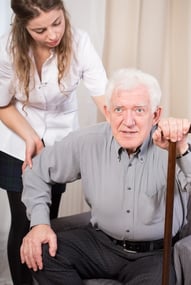 Osteoporosis is a common and often debilitating disease that affects the strength and density of the bones, causing them to become weak, brittle, and prone to fractures. It is most common in people over the age of 50, affecting one of every two women and one of every six men in that age group. So what is the long term impact of osteoporosis on the health and well-being of people affected by this disease?
Osteoporosis is a common and often debilitating disease that affects the strength and density of the bones, causing them to become weak, brittle, and prone to fractures. It is most common in people over the age of 50, affecting one of every two women and one of every six men in that age group. So what is the long term impact of osteoporosis on the health and well-being of people affected by this disease?
About Osteoporosis Symptoms and Complications
Osteoporosis develops slowly over a number of years, the bones gradually losing strength and density. It is known as a silent disease, since it produces no obvious symptoms. For many osteoporosis patients a diagnosis is made only after the disease is advanced enough to cause complications, most commonly fragility fractures, which are broken bones after a minor bump or fall – injuries that generally would not cause fractures in healthy bones. Among the areas in which fragility fractures are most likely to occur are the hip or spine, and these fractures can take quite a toll on health, well-being, and quality of life.
Hip Fractures
A hip fracture is a break in the upper portion of the femur, or thigh bone, which forms part of the hip joint. They most often occur in the neck of the femur – just below the ball-like structure that fits into the hip socket. Hip fractures occur in 1.6 million people per year, and weak bone health due to osteoporosis is the most common underlying cause of these injuries.
Hip fractures are considered the most serious complication of osteoporosis. These fractures require surgical repair in virtually all cases and, in many, joint replacement surgery. Often, even after surgical repair or joint replacement surgery, these fractures are associated with reduced mobility and chronic pain. Less than half of all hip fracture patients regain their former level of mobility after recovering. Additionally, patients who suffer a hip fracture are at increased risk of requiring skilled nursing care, and up to 20 percent of patients die within a year of fracturing a hip. About 5 to 10 percent of patients who fracture a hip will experience a second hip fracture within three years.
Spinal Fractures
Spinal fractures typically occur in osteoporosis patients due to weakening and thinning of the vertebrae – the small bones that make up the spinal column. Most often these are compression fractures, which means that these small bones are crushed by pressure. While that pressure is sometimes the result of a fall, people with vertebrae weakened by osteoporosis may incur compression fractures from simple, everyday activities like lifting, reaching, twisting, and even coughing or sneezing.
Spinal compression fractures occur in more than 700,000 people per year. They cause back pain that can, in some cases, radiate to other areas of the body. They affect posture, often leading to a rounded or "humped" back. That bent, forward-leaning posture can affect balance and gait, increasing risk of falls. People with spinal weakness or compression fractures due to osteoporosis may also lose height. Treatment for most patients is simply rest and pain medications, but in severe cases, surgery may be necessary.
Early Detection and Treatment Reduces Fracture Risk
Since the progress of this debilitating disease can be slowed or halted with early detection and treatment, anyone over the age of 50 should discuss bone mineral testing with their doctor. These tests are simple and painless, and avoiding the worst consequences of osteoporosis – fractures, pain, disability, and joint replacement surgery – make taking the time to get them done worthwhile.





